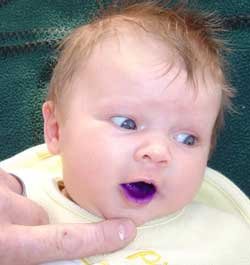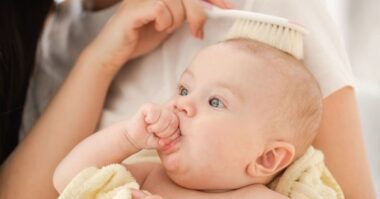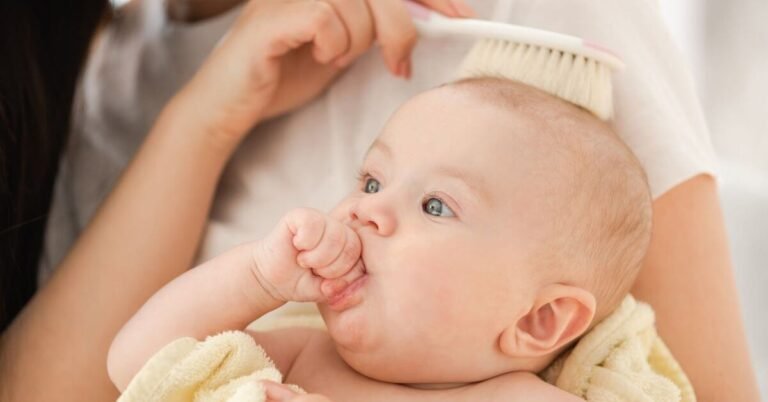Nipple thrush- How to treat a breastfeeding yeast infection?
Nipple thrush and baby oral thrush usually happen together when you are breastfeeding. A thrush infection can be very painful during breastfeeding and between feeds.
Thrush is an infection caused by a fungus named Candida albicans, and its symptoms are very similar to mastitis. A nipple fungal infection spreads easily when you are breastfeeding, so both mother and baby can infect one another.
Signs of a thrush infection are:
- nipple pain
- flaking, scaly, blistering, intense pink nipples
- sharp, stinging pain deep in the breast
- painful nipples even after feeding
- pain that does not improve with the usual remedies to treat nipple pain (adjustments to latch and positioning)
The simplest way to confirm you are dealing with thrush is to look in your infant’s mouth. You can see white patches on the baby’s tongue, inner cheeks, and lips with thrush. Unlike milk residue, it won’t come off when cleaning the baby’s mouth.
AFFILIATE DISCLAIMER: SOME OF THE LINKS IN THIS POST ARE AFFILIATE LINKS. IF YOU USE THESE LINKS TO BUY SOMETHING, WE MAY EARN A COMMISSION. SEE FULL DISCLAIMER.
What causes nipple thrush?
Candida is a fungus that lives naturally in your body. There are also bacteria in the body that ensure a natural balance between them. When this balance is disturbed, the Candida can flourish and cause an infection.
Most often, a breastfeeding mother gets a nipple yeast infection when her baby has oral thrush. This can happen after treatment with antibiotics, as this destroys the natural flora that normally protects a baby’s mouth.
One of the reasons you may be more susceptible to nipple thrush is if you are diabetic or taking birth control tablets.
Moreover, yeast flourishes in a moist, warm environment and thrives on milk. So, leaking breasts and wet breast pads are the perfect breeding ground for this fungus.
What causes thrush in a baby’s mouth?
First, an infant’s immune system is not well developed yet, making him/her more susceptible to candida infections. Secondly, as we already mentioned, antibiotics may cause an imbalance of the natural flora in the mouth. This may happen if your baby takes, for example, antibiotics for an ear infection.
A common sign of a baby thrush infection is a baby’s unsettled behavior during feedings because of a sore mouth. Some babies appear not to be affected by the thrush, while others are so uncomfortable they refuse to feed.
Treating a nipple fungal infection while breastfeeding
Even if mom or baby is symptom-free, it is important that both get treatment simultaneously. For instance, the baby has mouth thrush without visible symptoms, and you have a nipple thrush infection. If you only treat your nipple thrush and do not treat the baby’s oral thrush, it is likely you get infected again by your baby.
If you suspect you have persistent nipple pain due to a thrush infection, talk to your physician or a lactation consultant. Generally, for nipple yeast treatment, they use topical antifungals such as nystatin, clotrimazole, ketoconazole, or miconazole. Following the doctor’s guidelines for treatment is important. Continue the treatment for at least two weeks after all the symptoms have gone.
How to use: After every nursing session, apply and gently massage the breast fungus cream or gel onto your nipples. At the same time, the infant’s inner mouth needs to be treated with nystatin suspension.
Candida infections can be hard to eradicate, and the pain in the breast and nipple can sometimes be hard to endure. So, you don’t want anything to postpone the healing. Nipple pain is the second most common reason why women stop breastfeeding in the first six months. It may help to take some over-the-counter pain medication such as Motrin, Advil, or Ibuprofen, which are considered safe to use when breastfeeding.
Treatment with Gentian Violet
When the thrush fungus is resistant to the nipple thrush treatment and there is no expected improvement, you may have to try another antifungal cream.

When you have no success with the standard treatments, you can try Gentian violet. It is an effective natural remedy for thrush. Gentian violet is available without a prescription, and you can use it as nipple yeast treatment and in a baby’s mouth. You only have to be careful about your clothes, as they stain and can become very messy.
According to La Leche League International, you can use Gentian violet (in a less than 0,5% water-based solution) daily. Use Gentian violet 2 to 3 times daily for 3 days but never more than 7 days. Stronger concentrations and prolonged use may cause irritation and ulcers in a baby’s mouth.
How to use: Cover all areas of the baby’s mouth with the gentian violet using a cotton swab. After that, the baby can feed on both breasts. It’s recommended to use a fresh cotton swab for each application.
Thrush prevention
For babies:
- After feeding, rinse the baby’s mouth with water to remove any milk residue.
- Sterilize bottles and pacifiers.
- Wash (and boil if possible) teethers, toys, and everything that comes in contact with the baby’s mouth.
- If a baby is on antibiotics, you can apply some acidophilus powder with a clean finger to the inside of the baby’s mouth. This will restore the natural flora in the baby’s mouth.
For the mother:
- Hygiene is very important. Make a habit of washing your hands before and after breastfeeding.
- You can rinse your nipples with a vinegar and water solution(1 cup water/1tbs vinegar).
- Let your nipples air dry between feedings.
- Use nursing pads without a plastic barrier to prevent the fungus from growing, and change them after each feed.
- Wear 100% cotton nursing bras.
- Wash nursing bras and breast pumps with boiling water and soap.
Eating yogurt or kefir will restore the natural flora in your body. If you don’t like yoghurt, you can also take probiotics in capsules.
It’s essential to be mindful of consuming heavily sweetened foods and artificial sweeteners. These sweeteners can create an environment that promotes the growth of the Candida species, a type of yeast that naturally occurs in the human body. Candida overgrows can cause various health issues, including digestive problems, skin issues, and even systemic infections. Candida feeds primarily on sugar, and consuming too much of it can lead to an overgrowth of the yeast. If you want to maintain a healthy balance of Candida in your body, keep your intake of sweetened foods and artificial sweeteners to a minimum.
Frequently asked questions
Can you still breastfeed with thrush?
Even during treatment, you can normally feed your baby breastmilk. If breastfeeding the baby is very painful, you can try to use a nipple shield or take some mild pain medication half an hour before feeding the baby. Things will soon improve with the right treatment for you and your baby.
Does thrush affect pumped milk?
Is it possible to freeze breastmilk while you are receiving treatment for thrush? It is a controversial subject. La Leche League suggests not storing expressed milk, as freezing does not kill the Candida organism and can possibly reinfect the infant later. But Kellymom suggests not discarding the contaminated frozen breastmilk. To prevent thrush, label the frozen breastmilk and boil it before giving it to your baby.
Does nipple thrush affect milk supply?
When both the mother and baby are experiencing painful symptoms, thrush can affect the milk supply. Pain during breastfeeding can affect the let-down reflex, and milk production may slow down. Moreover, the baby may suffer from a burning or dry mouth and lose its taste. It may result in a decreased milk supply as the baby cannot nurse efficiently.
Can nipple thrush cause bleeding?
Severe irritated and cracked nipples can result in bleeding. But blood in breast milk does not always mean you have a nipple yeast infection. For instance, if you use a breast pump incorrectly. Using too much suction can traumatize the small veins in the breast, and blood can get into the breastmilk. Furthermore, in cases of mastitis, bloody discharge may sometimes leak from the nipple.
Is thrush contagious when you are breastfeeding?
Yes, oral thrush in newborns can easily pass between mother and baby during breastfeeding. Mother and child should, therefore, both get treatment to prevent them from repeatedly infecting each other. Checking other family members for fungal infections is also a good idea since yeast infections easily spread where skin touches the skin.
Can nipple thrush cause mastitis?
If the thrush severely damages the nipples, bacteria like staphylococcus can enter the breast and cause mastitis. The thrush treatment may be combined with antibiotics in this case.
What doctor do I see for nipple thrush?
When you experience the painful symptoms of a nipple yeast infection you will need the appropriate treatment immediately. Who do you turn to for help? You can contact your doctor, the baby’s pediatrician, or a lactation consultant. An experienced lactation consultant is qualified to assess and propose a treatment plan to overcome this fungal infection safely so you can continue your breastfeeding journey without pain.
More related topics










